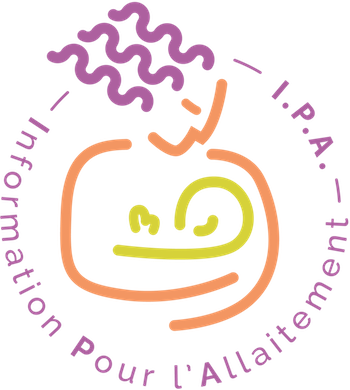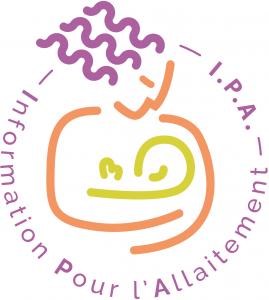Catégories
 > Thérapeutique > Thérapeutique médicamenteuse > Médicament > Thérapeutique > Thérapeutique médicamenteuse > Médicament
MédicamentSynonyme(s)Traitement Médication |
Documents disponibles dans cette catégorie (116)
Article : texte imprimé
Raynaud's phenomenon (RP) occurs in 3–5% of the population, with the rate of occurrence in women about four times that in men. It is caused by vasospasm of the blood vessels in the extremities, including the nipple. RP of the nipple can be extre[...]Article : texte imprimé
Drug treatment of RA need not be a barrier to breastfeeding; however, careful drug selection is important. Low-dose methotrexate is a mainstay of therapy, and limited data have found no indication of toxicity in breastfed infants, but more data [...]Article : texte imprimé
The Academy Breastfeeding Medicine (ABM) protocols have been accepted worldwide as the standard guide both for clinicians in how to manage the maternal–infant breastfeeding dyad and for the public health system in how to create a breastfeeding s[...]Article : texte imprimé
The plethora of new drugs to treat hepatitis presents a confusing array of options to treat the nursing mother. LactMed has recently undertaken an extensive review of these drugs to put them into a consistent context. [extrait de l'article]Article : texte imprimé
Discussion of medication use during breastfeeding usually centers around potential harm to the nursing infant. However, another important consideration is that of drugs that interfere with lactation. These can be divided into two subcategories: [...]Article : texte imprimé
This column discusses medications that affect lactation when given postpartum. The previous column discussed medications that affect the establishment of lactation when given before or during delivery. Additional details and literature reference[...]Article : texte imprimé
Chenxi Cai, Auteur ; Matthew Granger, Auteur ; Peter Eck, Auteur |Background: The literature on the iron requirements of exclusively breastfed infants contains conflicting data and contrary views. Objective: The purpose of this study was to summarize the evidence for both benefits and risks of daily oral ir[...]Article : texte imprimé
Yuka Wada, Auteur ; Fumio Suyama, Auteur ; Aiko Sasaki, Auteur ; Jumpei Saito, Auteur ; Yuika Shimizu, Auteur ; Shoichiro Amari, Auteur ; Yushi Ito, Auteur ; Haruhiko Sago, Auteur |Breast milk is the optimum for all infants, but hospitalization in the neonatal intensive care unit can cause separation of mothers and infants, which often interferes with milk secretion. Some reports show that domperidone is effective in promo[...]Article : texte imprimé
Jumpei Saito, Auteur ; Naho Yakuwa, Auteur ; Noriko Sandaiji, Auteur ; Hiroyo Kawasaki, Auteur ; Kayoko Kaneko, Auteur ; Tomo Suzuki, Auteur ; Akimasa Yamatani, Auteur ; Haruhiko Sago, Auteur ; Atsuko Murashima, Auteur |Background: Esomeprazole is the S-isomer of omeprazole and is used to treat stomach acid-related diseases. Most data regarding the safety of esomeprazole during pregnancy are derived from studies on omeprazole, and the data characterizing esomep[...]Article : texte imprimé
Lisa H. Amir, Auteur ; Luke E. Grzeskowiak, Auteur ; Renee Kam, Auteur |Key Messages Breastfeeding women often need to take medication, yet this population has been neglected by pharmaceutical companies and researchers. When using utilitarian ethical theory, with its foundational principle of utility, one should[...]Article : texte imprimé
Gillian A. Beauchamp, Auteur ; Robert G. Hendrickson, Auteur ; Daniel A. Spyker, Auteur |Introduction: We described calls to U.S. poison centers (PCs) related to potential exposure to substances through breast milk. Materials and Methods: We analyzed National Poison Data System calls between 2001 and 2017 with “Exposure through b[...]texte imprimé
La prescription de produits pharmaceutiques chez la femme enceinte doit respecter la double règle qui veut que, d'une part, l'on privilégie la prise en charge de la future mère dont la vie est en danger plutôt que celle du foetus, et d'autre par[...]texte imprimé
This book is a practical guide for medical practitioners as they navigate through breastfeeding problems that occur in day-to-day practice. If mothers have a breastfeeding complication they are often directed to their GP. In complex situation[...]texte imprimé
"Written by a world-renowned expert in perinatal pharmacology, this essential reference contains current, complete, and evidence-based information on the transmission of maternal drugs into human milk. Because so many women ingest medications wh[...]Article : texte imprimé
Teresa Baker, Auteur ; Palika Datta, Auteur ; Kathleen Rewers-Felkins, Auteur |Background: Morbidly placenta accreta as a cause of postpartum morbidity is increasing in incidence. One conservative option is use of methotrexate as an adjuvant therapy for the management of placenta accreta. There is concern that use of metho[...]Article : texte imprimé
Adetola Louis-Jacques, Auteur ; Ronée Wilson, Auteur ; Kathryn Dean, Auteur ; Ivonne Hernandez, Auteur ; Diane L. Spatz, Auteur ; Sarah Obican, Auteur |Objectives: To improve maternal knowledge on medication and substance usage during lactation through prenatal breastfeeding education and assess breastfeeding rates at 2–4 and 6–8 weeks postpartum. Study Design: This quality improvement initi[...]Article : texte imprimé
Farhadi Roya, Auteur ; Philip Roy K., Auteur |One of the important challenges in surrogate pregnancies is the early bonding of genetic mother with her infant and the establishment of breastfeeding. A combination of pharmacological and nonpharmacological methods is often used for the inducti[...]Article : texte imprimé
Many Australian infants are being diagnosed as having 'reflux' based on symptoms alone, rather than on diagnostic tests. They are then prescribed medication. Research has clearly demonstrated that these medications are ineffective in infants and[...]Article : texte imprimé
Ahmadai Hila, Auteur ; Andrew Crowe, Auteur ; Lisa BG Tee, Auteur |Despite the known risks associated with opioid use during breastfeeding, their place in therapy is established as part of a multimodal approach to treatment of pain in the early postpartum period. Opioids may be prescribed for post-caesarean ana[...]Article : texte imprimé
Marta Krenz-Niedbala, Auteur ; Krzysztof Koscinski, Auteur ; Elzbieta A. Puch, Auteur |Background: Studies of the protective effect of breastfeeding on asthma have not brought unequivocal results, and thus this issue remains controversial. Antibiotic use, known to increase asthma risk, may be involved in this relationship. The obj[...]Article : texte imprimé
Laurence Spiesser Robelet, Auteur ; Vanida Brunie, Auteur ; Vincent de Andrade, Auteur |Background: Breastfeeding is a major public health issue in terms of its benefits to both mothers and infants. Despite recommendations, breastfeeding initiation and duration are low in many industrialized countries. Although human milk is viewe[...]Article : texte imprimé
Biologic medications are effective therapeutic options for treating autoimmune diseases, but information on their safety in lactation is still scarce. Autoimmune conditions occur frequently in women of childbearing age, creating difficult decisi[...]Article : texte imprimé
Lidocaine and bupivacaine have extensive documented use in nursing mothers and are the preferred injectable local anesthetics during breastfeeding. Topical anesthetics known to cause systemic toxicity after oral ingestion, such as benzocaine, co[...]Article : texte imprimé
Carine Issa, Auteur ; Maria Hobeika, Auteur ; Rouba Karen Zeidam, Auteur |This study aims to investigate the positive association between a longer duration of breastfeeding and better health outcomes from birth to 36 months by using direct health outcomes and indirect health indicators. It is a cross-sectional study i[...]Article : texte imprimé
Lauren M. Jansson, Auteur ; Nancy Spencer, Auteur ; Krystle McConnell, Auteur |Background: In addition to the well-known benefits of human milk and breastfeeding for the mother and infant, breastfeeding may mitigate neonatal abstinence syndrome severity in prenatally opioid-exposed infants. However, lack of conclusive dat[...]Article : texte imprimé
texte imprimé
Ce guide s?ouvre sur une présentation de la physiologie de la lactation et de la pharmacocinétique des médicaments appliquée à la période de l?allaitement maternel. La prescription des médicaments en période d?allaitement est ensuite abordée par[...]Article : texte imprimé
Key Messages Responding to a recently published case study, in this Insights into Practice the author examines evidence for the use of medications including estrogen, domperidone and spironolactone as part of breastfeeding support for transgend[...]Article : texte imprimé
For information on the use and safety of drugs in nursing mothers, the answers you get also depend on where you look for the answers. Several studies have compared the information provided in different sources. A 2007 article found wide variatio[...]Article : texte imprimé
Marita De Waard, Auteur ; Birgit S. Blomjous, Auteur ; Marinka L.F. Hol, Auteur |"Background: Medication use during pregnancy and lactation can be unavoidable, but knowledge on safety for the fetus or breastfed infant is limited among patients and healthcare providers. Research aim: This study aimed to determine (a) the[...]Article : texte imprimé
Nour A. Al-Sawalha, Auteur ; Linda Tahaineh, Auteur ; Abeer Sawalha, Auteur |Introduction: A wealth of evidence reveals the benefits of breastfeeding. During the breastfeeding period, nursing mothers may face many medical conditions that require medical management. The medication use among breastfeeding women in Jordan i[...]texte imprimé
Thomas W. Hale, Auteur | 2002Medications and Mother's Milk is now considered the classic reference source for evaluationg the use of medications in breastfeeding mothers. It contains the most extensive and comprehensive information on medications and their use in breastfeed[...]Article : texte imprimé
Sofia Colaceci, Auteur ; Angela Giusti, Auteur ; Alessia De Angelis, Auteur |Background: In cases of pharmacotherapy, mothers are confronted with the dilemma of breastfeeding and giving up the medication or discontinuing breastfeeding in order to take the drug, thus avoiding any potential risk for the infants. Object[...]Article : texte imprimé
It is feasible for migraineurs to breastfeed. If nondrug alternatives are ineffective, several prophylactic drugs such as certain anticonvulsants, beta-blockers, and onabotulinumtoxinA are safe for the breastfed infant. Although the new injectab[...]Article : texte imprimé
Pawin Puapornpong, Auteur ; Panwara Paritakul, Auteur ; Maysita Suksamarnwong, Auteur |Background: Nipple pain is the most common complaint of breastfeeding mothers during the immediate postpartum period. Persistent nipple pain is associated with low breastfeeding rate at 6 months postpartum. Objective: To further explore the i[...]texte imprimé
La Leche league France, Auteur ; Brigitte Sparnaaij, Illustrateur | L'Etang la Ville : Leche League France | 2019"Comment reconnaître qu'un bébé prend bien le sein ? A quelle fréquence doit-il téter ? Pendant combien de temps le lait tiré peut-il être conservé ? Ce petit mémo apporte de multiples réponses aux questions fréquentes autour de l'allaitement."[[...]Article : texte imprimé
François Fraissinet, Auteur ; Marine Lesourd, Auteur ; David Metsu, Auteur ; Peggy Gandia, Auteur |Article : texte imprimé
texte imprimé
L'objectif de cet ouvrage est d'aider les sages-femmes et les autres professionnels de la santé à prodiguer des conseils et un soutien plus efficaces aux femmes qui allaitent, en s'appuyant sur des connaissances solides en physiologie de la lact[...]texte imprimé
Academy of Breastfeeding Medicine, Auteur ; La Leche League France, Auteur"Objectif : Ce protocole passe en revue les différents produits d'anesthésie et d'analgésie chez la mère (pendant le travail, pour une césarienne, pour une chirurgie) et discute des compatibilités et des conséquences possibles sur l'allaitement.[...]Article : texte imprimé
Daphne den Besten-Bertholee, Auteur ; Douwe Hedzer van der Meer, Auteur ; Peter Gerrit Johannes ter Horst, Auteur |Introduction: The aim of this study was to determine the quality of lactation studies investigating antidepressants in breast milk according to the Food and Drug Administration (FDA) draft guidelines and the article by Begg et al., 2002, publish[...]Article : texte imprimé
CHT Yeung, Auteur ; La Leche League France, Traducteur |"De nombreuses mères allaitantes hésitent à suivre un traitement médical en raison de leur crainte des risques pour leur enfant, ou décident de sevrer pour le suivre. Et de nombreux professionnels de sanré conseillent une suspension de l'allaite[...]Article : texte imprimé
Anitha Muddana, Auteur ; Diane T. Asbill, Auteur ; Maya R. Jerath, Auteur |Background: It is not uncommon for mothers to have persistent pain with breastfeeding beyond the first few weeks after birth. Persistent pain can be multifactorial, with neuropathic pain maintained by central sensitization being one dimension. O[...]Article : document cartographique imprimé
Most radiopharmaceuticals consist of two parts: the radioactive isotope and a pharmacologically inert carrier molecule to which it is attached. The carrier molecule is designed to take the radiopharmaceutical to its intended target in the body b[...]Article : texte imprimé
Of the wide range of drugs used to treat respiratory conditions, few have any serious concerns for use in nursing mothers. Inhaled drugs used for respiratory conditions, including nasal sprays, pose little or no risk to the breastfed infant. Ora[...]Article : texte imprimé
Jumpei Saito, Auteur ; Kayoko Kaneko, Auteur ; Naho Yakuwa, Auteur ; Hiroyo Kawasaki, Auteur ; Akimasa Yamatani, Auteur ; Atsuko Murashima, Auteur |Background: Oral direct factor Xa inhibitors, collectively referred to as direct oral anticoagulants, are not recommended for breastfeeding women due to insufficient data about the transfer of these drugs into breast milk. In this study, we seri[...]Article : texte imprimé
Marcella Muysson, Auteur ; Kendall Marshall, Auteur ; Palika Datta, Auteur ; Kathleen Rewers-Felkins, Auteur |Background: Rivaroxaban (Xarelto) is a reversible direct factor Xa inhibitor used for the treatment and prevention of coagulation in numerous syndromes. There is very limited information available on the transfer of rivaroxaban into human breast[...]Article : texte imprimé
Ann M. Witt, Auteur ; Kelly Burgess, Auteur ; Thomas R. Hawn, Auteur |Background: Although breast pain remains a common cause of weaning, controversy exists regarding the etiology of chronic pain. Prospective studies are needed to define optimal treatment regimens. We evaluated patient history, exam, and bacterial[...]














































